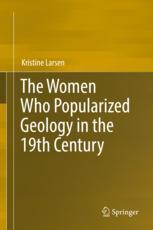

Most ebook files are in PDF format, so you can easily read them using various software such as Foxit Reader or directly on the Google Chrome browser.
Some ebook files are released by publishers in other formats such as .awz, .mobi, .epub, .fb2, etc. You may need to install specific software to read these formats on mobile/PC, such as Calibre.
Please read the tutorial at this link: https://ebookbell.com/faq
We offer FREE conversion to the popular formats you request; however, this may take some time. Therefore, right after payment, please email us, and we will try to provide the service as quickly as possible.
For some exceptional file formats or broken links (if any), please refrain from opening any disputes. Instead, email us first, and we will try to assist within a maximum of 6 hours.
EbookBell Team

4.3
18 reviewsThe female authors highlighted in this monograph represent a special breed of science writer, women who not only synthesized the science of their day (often drawing upon their own direct experience in the laboratory, field, classroom, and/or public lecture hall), but used their works to simultaneously educate, entertain, and, in many cases, evangelize. Women played a central role in the popularization of science in the 19th century, as penning such works (written for an audience of other women and children) was considered proper "women's work." Many of these writers excelled in a particular literary technique known as the "familiar format," in which science is described in the form of a conversation between characters, especially women and children. However, the biological sciences were considered more “feminine” than the natural sciences (such as astronomy and physics), hence the number of geological “conversations” was limited. This, in turn, makes the few that were completed all the more crucial to analyze.